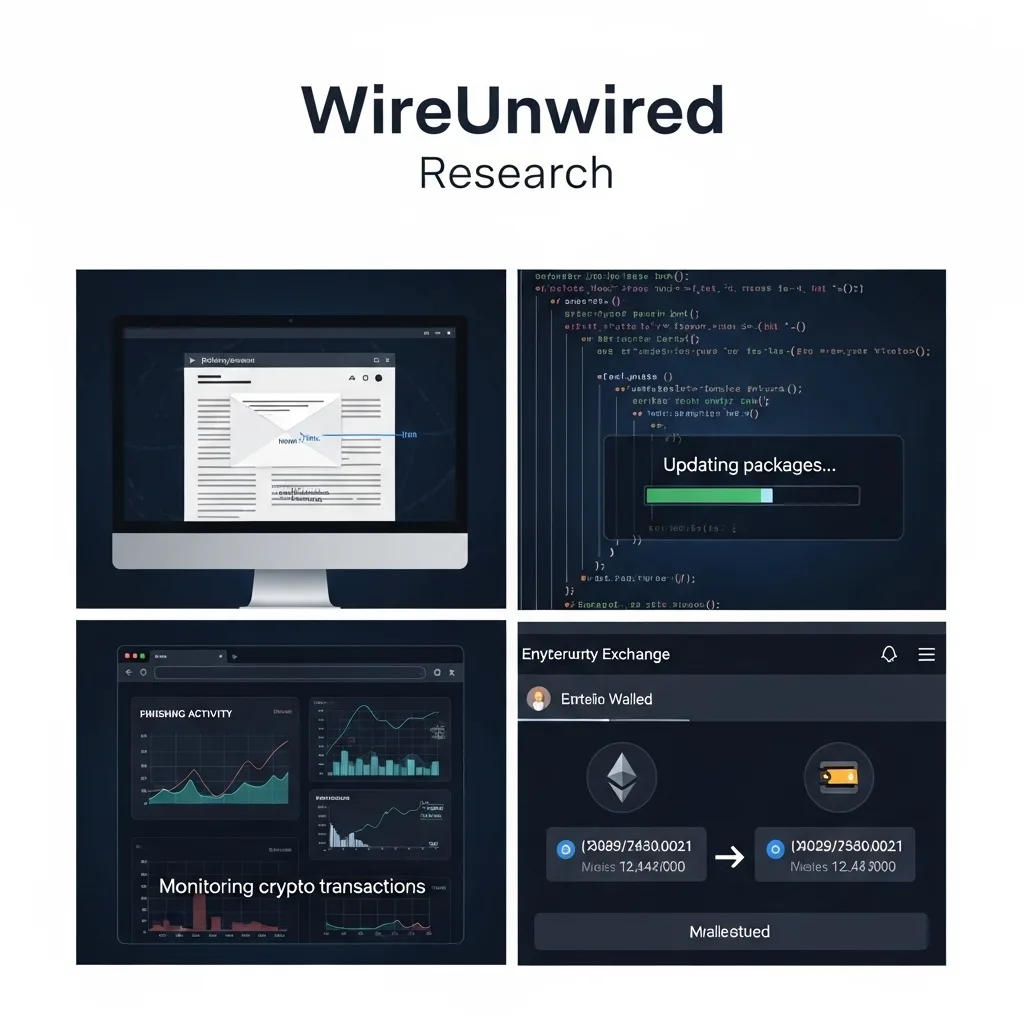The NPM Attack That Changed Everything: A Wake-Up Call for AI and Automation
- by WireUnwired Editorial Team
- 13 September 2025
- 4 minutes read

In September 2025, a sophisticated supply chain attack compromised NPM packages with over 2 billion weekly downloads, targeting chalk, debug, and ansi-styles—some of the most trusted dependencies in software development. The attacker used phishing to gain maintainer credentials, then injected malware that stealthily monitored crypto transactions and redirected funds through lookalike wallet addresses.
Every developer has done it thousands of times—running npm install to pull in these exact packages for colorful terminal output or debugging functionality. These aren’t glamorous dependencies, but they’re the invisible foundation that powers millions of applications, including the rapidly expanding world of AI agents and autonomous systems. Which is exactly why this breach represents far more than crypto theft—it’s a blueprint for the future of AI system exploitation.
The npm Attack That Changed Everything
What Happened
In September 2025, the software world faced a major shock when hackers broke into the accounts of developers behind some of the most widely used NPM packages. These packages, downloaded billions of times every week, suddenly became the delivery system for a sneaky new form of malware.
It all started simply enough:
- The attackers sent a convincing phishing email to a trusted package maintainer.
- Once they had the credentials, they quietly updated packages like chalk, debug, and ansi-styles.
- The new updates included hidden code that watched users’ browser activity, especially looking for cryptocurrency transactions.
- Whenever someone made a transaction, the malware swapped the real wallet address for an address controlled by the attacker.

Behind the scenes, the attack was surprisingly quiet and effective. The malicious code hooked into standard browser functions like fetch() and XMLHttpRequest(), and stayed out of sight while scanning for wallet activity. It only acted at the critical moment, replacing wallet addresses right before users confirmed their transactions—making it almost impossible to spot until it was too late.
This incident wasn’t just another data breach. It was a wake-up call, showing how easily attackers can slip inside the code we trust most. Even more importantly, it signals a new kind of threat—where the same techniques could be aimed at automated systems and AI agents built on top of these widely shared software dependencies.
TRENDING
Why AI Agents Can Be the Next Perfect Target for npm attacks?
What makes this attack so much more troubling is where these compromised packages often end up: inside the automated workflows and AI agents that drive today’s technology. These systems, from chatbots to trading bots to intelligent automation tools, all rely heavily on third-party packages like the ones that were targeted.
Unlike traditional apps, AI agents and autonomous platforms often:
Pull in hundreds of dependencies—each one a possible weak link.
Work unsupervised, making split-second decisions without human review.
Handle sensitive data, money, or infrastructure tasks in real time.
Chain together automated tasks, meaning one corrupted package can cascade across an entire system.
Because AI agents operate with such speed and scale, a single infected package can quietly hijack operations, steal information, or manipulate outcomes—often before anyone realizes something’s wrong.
And it isn’t just about crypto wallets. The same kinds of hooks used in this attack could spy on, alter, or disrupt:
Data pipelines for machine learning models
Automated financial transactions
API calls between smart systems
Workflow triggers inside cloud services
Almost any process that trusts its code dependencies
As more organizations turn to agentic workflows and automation, the stakes keep rising. The NPM supply chain attack is a stark warning: threats can now move faster, dig deeper, and cause more damage than ever—especially when our most advanced systems trust code from the open internet.
What I Think :The Conclusion .
Looking back at this incident, I can’t help but feel both alarmed and motivated. As someone who works with automation and open-source software every day, this attack struck close to home. It was more than just another headline—it was a wake-up call.
To me, the biggest lesson isn’t just about technical defenses—it’s about mindset. We can’t afford to treat software dependencies as background noise anymore. I believe every developer, team, and company now has a responsibility to look more closely at the code they use and contribute to, no matter how popular or “safe” it seems.
Watching how quickly the threat spread made me realize that our reliance on automation, AI agents, and community-driven tools is both our greatest strength and our most urgent challenge. If we want to keep building incredible things, we need to build habits of vigilance, transparency, and shared responsibility into every project.
Personally, I’m doubling down on reviewing my supply chain, using automated security tools, and supporting open discussions about these risks. My hope is that, as a community, we learn to balance innovation with caution—and ensure that trust in our tools remains well-placed.
This incident may have been a shock, but it’s also a chance to build a stronger, more secure future—if we all treat it as a turning point, not just a warning.
Discover more from WireUnwired Research
Subscribe to get the latest posts sent to your email.










